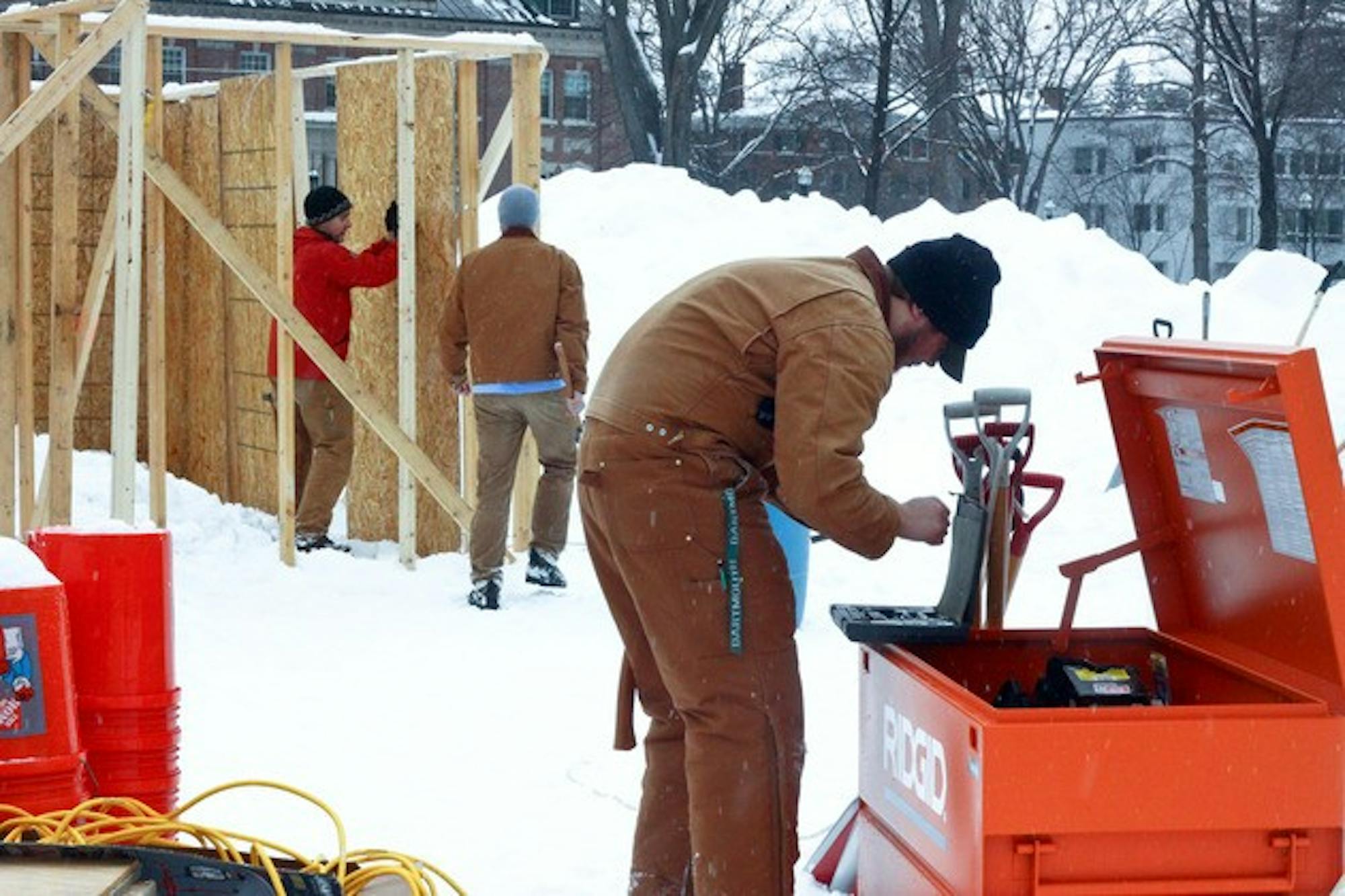On the count of three, the five students leaned against the frame, pushing with their hands and digging their feet into the snow to brace themselves. The students hoped to move the wall so that Meigs could nail it into place, but despite their efforts, the frame barely moved an inch, Kane said.
This year, in honor of the 100th anniversary of Winter Carnival, the sculpture chairs are hard at work creating a tribute to the College's first official sculpture. The first sculpture, created in 1925, was a castle wall that, when viewed from the front, seemed to enclose Baker Tower, recruitment chair Nick Valentini '13 said. Instead of just one wall, though, Valentini said they hope to construct a four-walled, 16-foot castle complete with a moat.
Over the next three weeks, the chairs hope to fill over 5,100 cubic feet with snow, according to senior snow sculpture chair Richie Clark '11. The snow was trucked over from Chase Athletic Field and the Campion Ice Skating Rink in Lebanon, Clark said.
Student volunteers who get two physical education class credits for their work began working to fill the base of the sculpture this past weekend. The students can often be seen in the middle of the Green, armed with shovels, hammers, the occasional chain saw and "anything that's dangerous," logistics chair Sarah Trahern '12 said. Student builders enrolled in the two sculpture PE classes work each Tuesday and Thursday. Their efforts culminate in an "all-nighter" Wednesday before Winter Carnival to carve the sculpture and prepare for its unveiling the following day, according to Kane.
Meigs said he helped start the PE course in 2009 after noticing declining participation in the structure's construction. Meigs, who headed construction efforts last year, currently serves as an advisor for the group.
"It's tough to get people out here," Meigs said while shoveling to blaring country music. "It's frustrating because people complain about the snow sculpture, and they don't help, so we really love having volunteers and it's awesome to have a big group."
Meigs estimated that if every student on campus helped shovel for two minutes, they would be able to complete the structure in one day. Thus far, the builders estimate that between 20 and 25 people including the chairs, PE students and other volunteers have contributed. "We're not paid to do it, we're not assigned to do it, so we really depend on the Dartmouth community as a whole to come together and help us build the sculpture," Valentini said.
All the builders are volunteers, according to Valentini.
Many students seem unaware that expertise in snow sculpting is not required to help, according to Kane.
"They see people out here working on it with chain saws and stuff and they think it's all professional work," Kane said. "But it's actually not."
A native of California, Kane said he decided to remain on campus during Winter term specifically to work on the sculpture.
"I only get four winters," he said. "I might never get this ever again. I love it."
In the past, the sculpture builders have encountered weather-related setbacks, but conditions have been favorable so far this winter, Clark said.
Last year, a lack of snowfall resulted in the use of artificial snow to complete a model of the Roman Colosseum. Two years ago, the College demolished the snow sculpture a scale model of Moosilauke Ravine Lodge after a wall collapsed.
Builders then attempted to reshape the ruined sculpture to resemble Mt. Moosilauke, The Dartmouth previously reported.
Trahern, who was a freshman at the time, was not involved in the model lodge's construction but participated in a late-night crew that attempted to construct a last-minute substitute.
With wind chills, late-night temperatures can reach below freezing, Kane said.
"I was out there until four in the morning," Trahern said. "And it was the greatest time ever for me even though I was freezing to death."
Trahern's freshman-year "all-nighter" on the Green convinced her to become more involved in the sculpture's creation in the future, she said. Trahern currently manages the group's finances, tools and materials.




